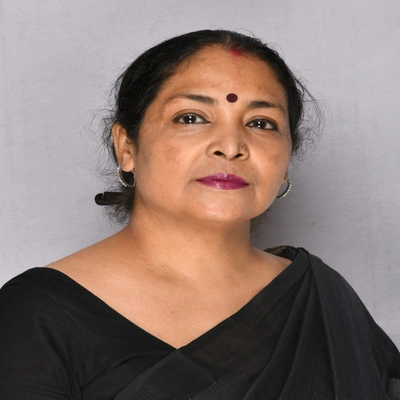Exploring the Exciting World of B.Sc. VFX Film Making
Lights, Camera, Action!
Imagine creating entire universes, bringing mythical creatures to life, and taking audiences on a thrilling visual journey. VFX has revolutionised the film industry, allowing filmmakers to turn their wildest imaginations into reality. From the smallest details to the most massive explosions, VFX has made the impossible possible.
What Is VFX Exactly?
VFX stands for “Visual Effects.” Any special effects that are applied to a movie using a computer are known as visual effects (VFX). To create realistic scenes and characters, VFX often blends live-action videos with altered or improved pictures. The basic objective of visual effects is to make false objects appear real or at least plausible. Visual effects can also be useful, like blasts that were recorded on-location during an automobile chase.
What Are The Different Stages Of the VFX Pipeline?
- Storyboarding and animatics- An artist or group of artists creates visual representations of the script’s actions throughout the storyboarding and animatics stages. They define framing from shot to shot by analysing the character motion and scene placements within the narrative. These visualisations provide the production team with a chance to start planning, albeit the outcomes are subject to alter in the future.
- Previsualization- Previs goes beyond storyboarding. Low-poly 3D models and representations of the settings where scenes take place are created by 3D artists. In order to save time and money on-site when it comes to filming the live-action footage, they collaborate with the production crew to set up camera angles and block out difficult scenarios beforehand.
- Concept Art & Design- Indeed, concept art and design are among the most crucial stages of pre-production. A concept artist or team of artists develops completely realised illustrations that further define settings, characters, props, costumes, lighting, colour, and other aspects of a film’s look and feel. Concept art is frequently what establishes the tone and aesthetic of a movie.
- Layout & Production Design- For many teams, layout—also known as production design—means different things. The ultimate objective is to create a visual depiction of the finished sets. This aids physical set builders in determining what is physically doable on set and what could require a digital set build, as well as communicating this information to directors and producers. It specifies for the VFX crew how digital set extensions might need to be incorporated, including where green screens should be placed on the live-action set. To complete the sets, the layout crew and production designers may employ blueprints, images, and 3D renderings.
- Model & Asset Creation- The creation of assets that aren’t possible or cost-effective to have on set depends on the work of the 3D modelling and texturing teams. They might be required to construct 3D models of characters (including digital doubles and non-human forms), props, buildings, vehicles, and weapons because they are one of the first groups participating in the post-production process. Moreover, 3D models can be used to support set-shot content. Some of these can be used to fix shadows and lighting with relative ease. If other elements are going to be destroyed, changed, or animated in any way, they may need to be completely realised and textured.
- Research & Development- R&D is getting more and more crucial as the filmmaking process becomes more complicated. In this phase, Technical Directors, who are frequently department-based, collaborate with VFX and CG supervisors to determine how specific shots may be executed technically. A big portion of a TD’s job is to ensure that work produced in one type of software can be picked up and translated into a different programme at a later stage in the pipeline because different steps in the pipeline require different software. To aid the artists in producing their photos more quickly, they also develop tools and plug-ins for their software.
- Rigging- Before a 3D model can be animated, such as a character or prop, a rigging team must create a set of controls, also known as a digital skeleton, for animators to work with. For a character or item to move naturally, this often entails inserting bones, calculating and implementing skin weights, and adding muscles.
- Animation- A character, a prop, or a vehicle is brought to life by animators using the specialised controls of their rig. Software that generates the final animation precisely maps out and sequences its motion. In order to obtain a final aesthetic, they also deal with motion capture data that needs to be adjusted.
- FX & Stimulation- A FX artist’s primary responsibility is to design digital simulations and procedural workflows based on physical or supernatural concepts that move or respond in accordance with the laws of physics. Depending on the impact and its use, these might be realistic or stylised. An FX artist might be working on simulations of particles, liquids, fire, and devastation at any one time. Moreover, they might be giving a character hair or making snowfall. In order to ensure organic movement and interaction with colliding FX elements, they frequently collaborate with animators and modellers.
- Lighting & Rendering- The VFX and CGI must be illuminated to integrate into the scenes after the animation and FX teams have finished their magic. In order to ensure that the lighting, colour, intensity, and shadows of the 3D scene correspond to the live-action video and any other 3D assets or graphics, a lighting artist, or team of lighting artists, strategically positions lights throughout the 3D scene. The necessary camera angles are then rendered out for each frame sequence before being given to digital compositing.
- Composting- The pipeline for visual effects ends at this stage. A compositor puts all of the movie’s components—live-action footage, special effects, animation, and matte painting—on top of one another. To give the impression that everything is naturally connected to one another in the same scene, they employ techniques like colour correction, masking, and others. They might insert an animated character into a real-world scene, show building devastation, or even add a simulated tsunami to a photo of a major street.
The scope of VFX (Visual Effects) is vast and constantly expanding in various industries, including films, television, advertising, video games, and virtual reality. With the advancement in technology and increasing demand for high-quality visuals, the demand for VFX professionals is also on the rise. VFX offers immense opportunities for creative individuals to showcase their skills and create stunning visual experiences.
NSHM Media School’s B.Sc. in VFX & Film Making is one of the most widely recognised programmes in the field of VFX. It can provide various benefits to students who aspire to make a career in the VFX industry. The programme is structured to equip the students with comprehensive knowledge of visual effects, animation, and computer graphics. Students can develop skills in 3D modelling, texturing, lighting, and compositing, among others.
NSHM Media School also provides practical training through industry collaborations and internships, allowing students to gain hands-on experience and develop a portfolio. The faculty consists of experienced professionals from the industry, providing students with industry-relevant insights and mentorship.
The college has successfully established itself as the best film and television institute in Kolkata; what are you waiting for then? If you want to get into this industry, enroll now!







